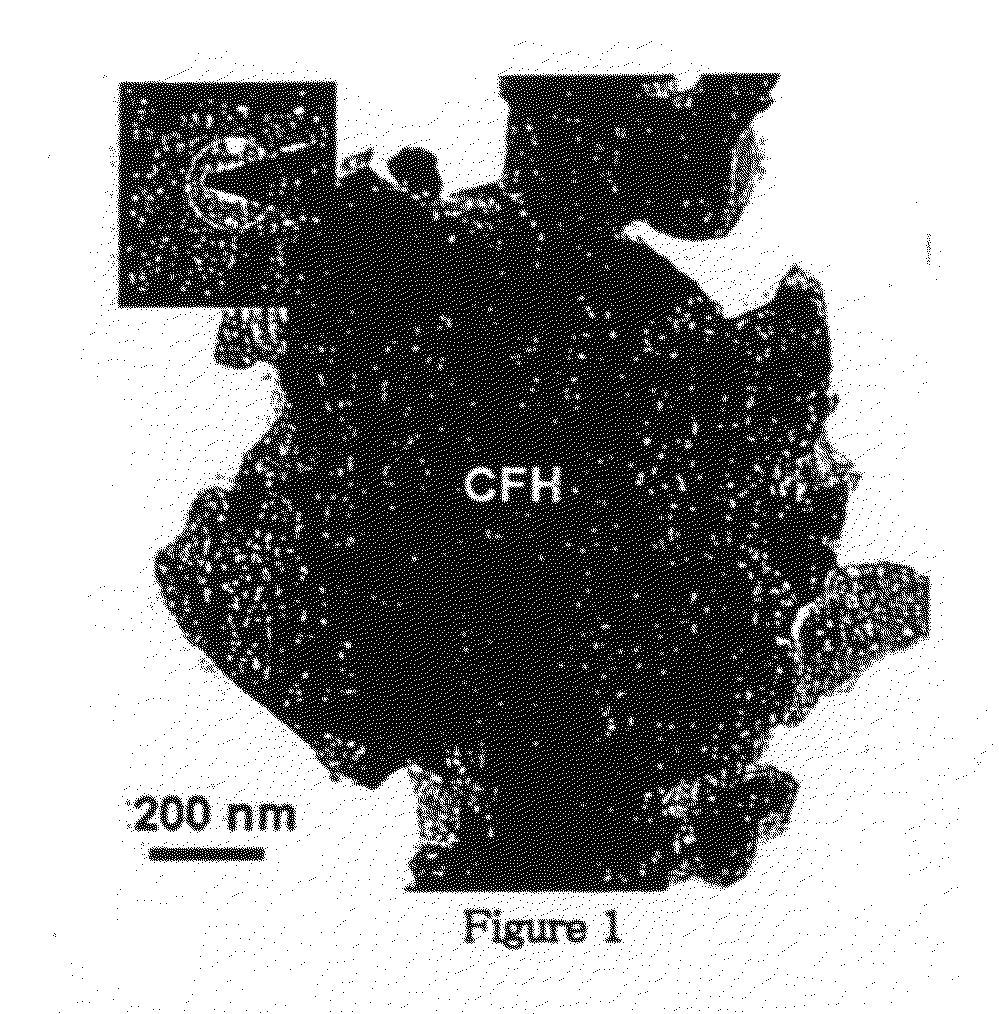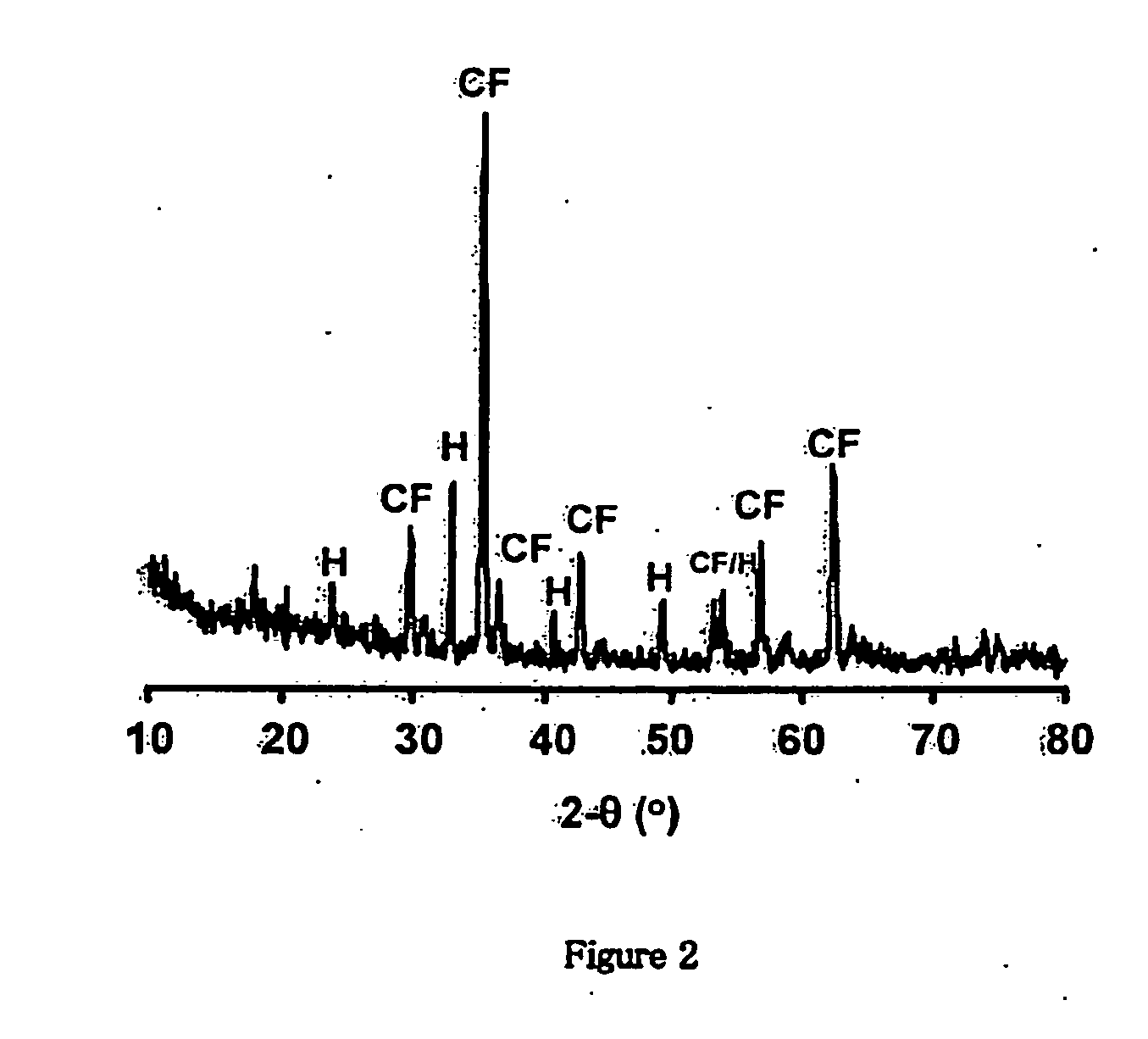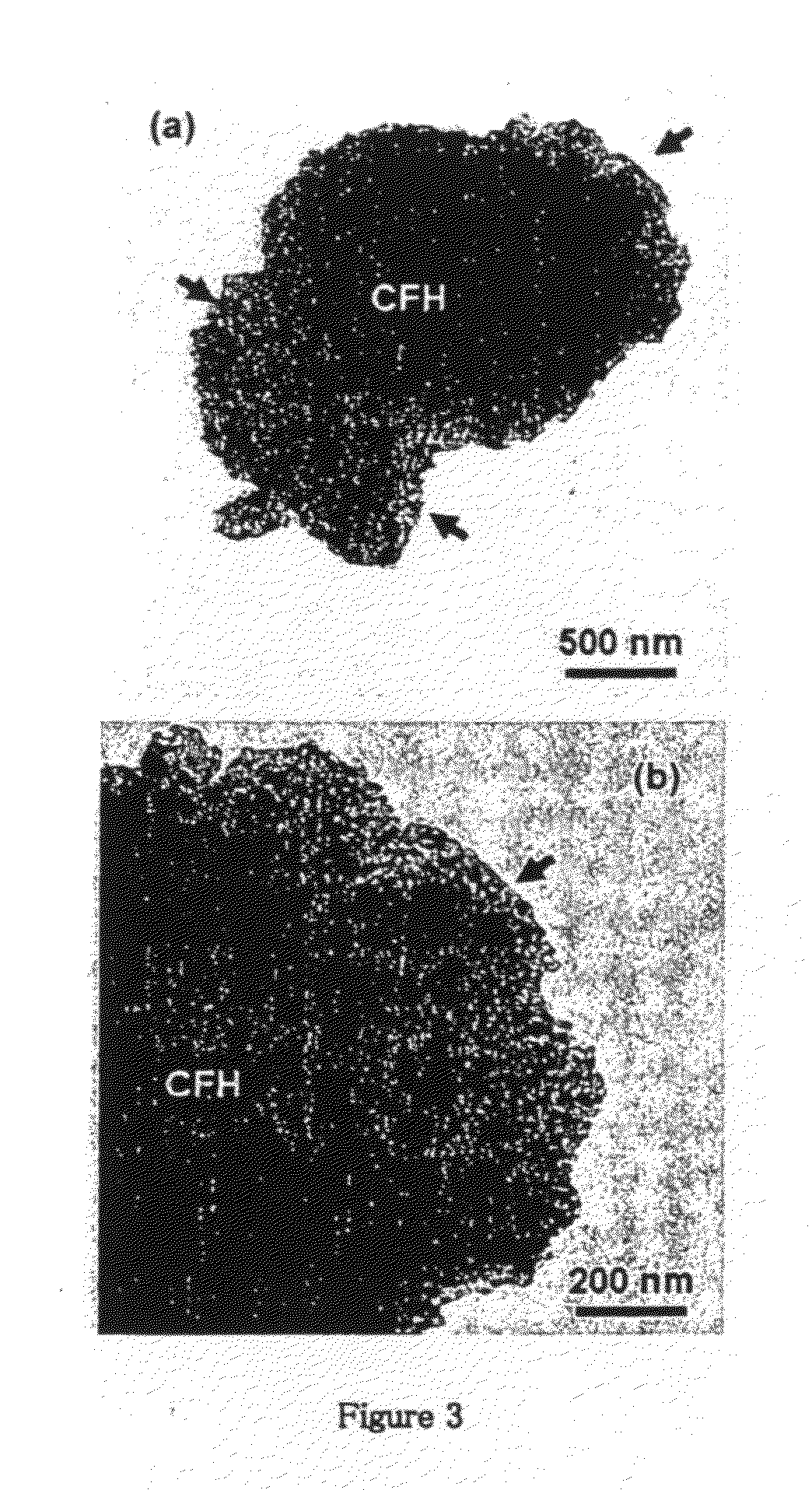Magnetic dye-adsorbent catalyst
a dye-adsorbent catalyst and magnetic technology, applied in the direction of catalyst activation/preparation, metal/metal-oxide/metal-hydroxide catalysts, magnetic bodies, etc., can solve the problem of reducing the photosynthetic activity, affecting the photosynthesis effect, and containing textile dyes. , to achieve the effect of quick removal of organic textile dyes
- Summary
- Abstract
- Description
- Claims
- Application Information
AI Technical Summary
Benefits of technology
Problems solved by technology
Method used
Image
Examples
example — 1
EXAMPLE—1
[0077]In a typical procedure, 36.94 g of citric acid (S.D. Fine Chemicals Ltd., India)) was dissolved in 40 ml of ethylene glycol (S.D. fine chemicals Ltd., India) (in the molar ratio of 1:4) to get a clear solution. 17 g of cobalt(II) nitrate (Co(NO3)2.6H2O, Sigma-Aldrich, India) and iron(III) nitrate (Fe(NO3)3).9H2O) (47.35 g, Sigma-Aldrich, India) were added to the above solution and stirred for 1 h. The resulting solution was then heated at 80° C. for 4 h in an oil bath under continuous stirring. The yellowish gel thus obtained was charred at 300° C. for 1 h in a vacuum furnace. A black colored solid precursor was obtained, which was then ground in an agate mortar and heat treated at 600° C. for 6 h.
[0078]The TEM micrograph of the obtained powder is shown in FIG. 1, where the aggregate size as large as ˜1 μm is noted. The edges magnetic particles are relatively straight, smooth, and featureless. The corresponding SAED pattern is shown as an inset in FIG. 1, which shows ...
example — 2
EXAMPLE—2
[0095]In this example, pure-CoFe2O4 magnetic particles were used instead of CoFe2O4—Fe2O3 magnetic particles as used in the previous example. The TiO2-coating on the surface of pure-CoFe2O4 magnetic particles were obtained via sol-gel using the Ti(OC3H5)4 precursor with the R-value of 10 (Larger R-values normally result in the precipitation of free-TiO2 particles without forming any coating on the surface of magnetic particles). The concentration of Ti(OC3H5)4 was reduced to 0.5 g·L−1 and the sol-gel process was repeated twice to obtain a thicker TiO2-coating. 15 wt. % TiO2 was deposited on the SiO2 / CoFe2O4 magnetic particles as derived from an increase in the weight of the sample. All remaining processing and test parameters were similar to those used in the previous example.
[0096]The XRD pattern obtained for the pure-CoFe2O4 magnetic particles is presented in FIG. 11, where the peaks are identified to correspond to those of pure-CoFe2O4 after comparing the pattern with th...
example — 3
EXAMPLE—3
[0099]In this example, the catalytic nature of the new magnetic dye-adsorbent catalyst has been demonstrated. All processing and test parameters were similar to those used in the example—2. The high surface-area new magnetic dye-adsorbent catalyst (calcined-sample) was utilized for the successive five cycles of MB dye-adsorption experiments conducted in the dark.
[0100]The quantitative variation in the normalized concentration of surface-adsorbed MB as a function of stirring time in the dark, as obtained for the different number of cycles. It is noted that, with increasing number of dye-adsorption cycles from cycle-1 to cycle-5, conducted in the dark, the maximum normalized concentration of MB dye adsorption decreases progressively from 95% to 60%. This clearly shows very high dye-adsorption capacity of the high surface-area new magnetic dye-adsorbent catalyst for the repeated number of dye-adsorption cycles.
[0101]To remove the previously adsorbed MB dye from the surface and...
PUM
| Property | Measurement | Unit |
|---|---|---|
| Temperature | aaaaa | aaaaa |
| Temperature | aaaaa | aaaaa |
| Temperature | aaaaa | aaaaa |
Abstract
Description
Claims
Application Information
 Login to View More
Login to View More - R&D
- Intellectual Property
- Life Sciences
- Materials
- Tech Scout
- Unparalleled Data Quality
- Higher Quality Content
- 60% Fewer Hallucinations
Browse by: Latest US Patents, China's latest patents, Technical Efficacy Thesaurus, Application Domain, Technology Topic, Popular Technical Reports.
© 2025 PatSnap. All rights reserved.Legal|Privacy policy|Modern Slavery Act Transparency Statement|Sitemap|About US| Contact US: help@patsnap.com



